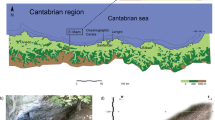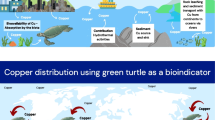Abstract.
The main reproductive period of herbivorous Antarctic copepods is coupled to the phytoplankton bloom in spring, while omnivorous or carnivorous species apparently reproduce year round. However, our knowledge of the reproduction during autumn and winter is limited. Therefore this study during a cruise with RV "Polarstern" aimed to measure reproductive activity in two dominant copepod species, Metridia gerlachei and Ctenocalanus citer, in late autumn (April/May). For this purpose, gonad development stages were determined from both species, taken with Bongo net in the eastern Bellingshausen Sea (Antarctic Peninsula region), and related to the ambient feeding conditions represented as chlorophyll a concentration. In addition, experiments were conducted with M. gerlachei to study the influence of feeding and starvation on gonad development. Gonad maturity of M. gerlachei differed considerably between stations and decreased over time. The correlation of chlorophyll a and the proportion of mature females, though significant, was weak and highly variable. In experiments, the gonads of feeding females were in better condition than those of their starving counterparts, showing that reproductive activity in M. gerlachei was related to ambient feeding conditions. Mature females of C. citer were found at each station (17–67%). The gonad stage composition was rather similar at all stations, showing no clear temporal and spatial trend. In this species, the proportion of mature females was not related to the chlorophyll a concentration, indicating either that the ambient phytoplankton stock was sufficient to fuel maturation or that other food sources were used. Our study shows that both species are reproducing during the austral autumn, indicating that their reproduction is partially decoupled from the spring phytoplankton bloom.
Similar content being viewed by others
Author information
Authors and Affiliations
Additional information
Electronic Publication
Rights and permissions
About this article
Cite this article
Niehoff, B., Schnack-Schiel, S., Cornils, A. et al. Reproductive activity of two dominant Antarctic copepod species, Metridia gerlachei and Ctenocalanus citer, in late autumn in the eastern Bellingshausen Sea. Polar Biol 25, 583–590 (2002). https://doi.org/10.1007/s00300-002-0378-7
Accepted:
Issue Date:
DOI: https://doi.org/10.1007/s00300-002-0378-7




